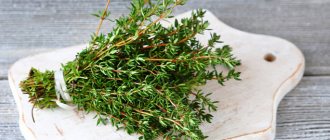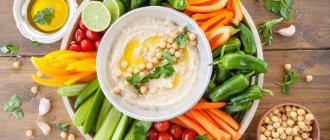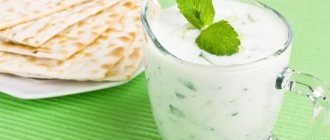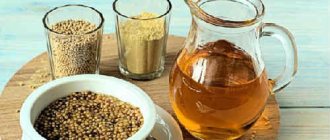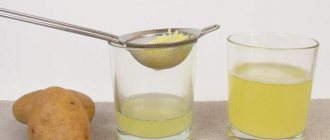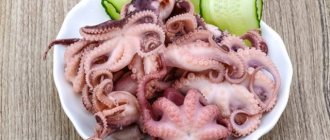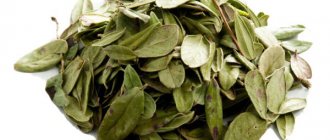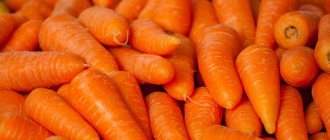Benefits of mint tea
The benefits of mint drink are due to the content of vitamin C and carotene, tannins, essential oils, and natural acids.
Mint tea has a long list of beneficial, healing properties for the body that cannot harm a healthy person. It has an analgesic, choleretic, bactericidal, diuretic, and vasodilator effect.
In addition, the benefits of drinking mint tea at night include relieving tension after a hard day at work and calming a frayed nervous system. It will relieve spasms and pain in the gastrointestinal tract, as well as in the lower abdomen during women's menstruation, and facilitate the transition to the menopause stage. Mint tea is good for diabetes.
Mint drink will be beneficial in the following situations:
- during the period of colds, it will alleviate the condition of the sick person, as it has a preventive property;
- useful for diseases of the ENT organs;
- for problems with sleep, nervous overexcitation, headaches, irritability;
- during periods of loss of strength;
- for problems with the gastrointestinal tract: flatulence, nausea, heartburn;
- for diseases of the cardiovascular system: angina pectoris, hypertension; Tea with mint is especially useful for high blood pressure, helping to normalize it;
- in cases of stomach diseases with low acidity;
- for diseases of the liver, kidneys, gall bladder.
Beneficial properties of mint in tea
Petals are added to achieve a unique refreshing effect and improve taste characteristics. However, few people know about their restorative and healing effects. The fact is that the pepper plant is rich in natural acids and compounds, contains a record amount of carotene, vitamins C and P. The listed substances turn out to be especially important for the body and increase its protective functions.
Combats stress and anxiety
Regular consumption of mint “cocktails” has a beneficial effect on the nervous system, helps to avoid overexertion and the development of chronic fatigue. In addition, it is an excellent prevention of depression and anxiety, and effectively relieves stress. The composition includes menthol, which in combination with tea leaves works as a muscle relaxant - a means to reduce the tone of skeletal muscles. It is this property that ensures the usefulness of leaves during stressful situations.
Insomnia – what are the benefits of mint tea?
For those who have problems sleeping, experts recommend drinking several cups of the magic drink a day. The optimal number is three. For greater effect, add lemon balm leaves and lavender inflorescences to the tea, they will allow the body to quickly calm down and relax, immerse yourself in the kingdom of Morpheus.
What is noteworthy is that such decoctions do not contain caffeine. Therefore, they do not have an invigorating effect and do not interfere with going to sleep.
Help with weight loss
The beneficial properties of mint tea for people losing weight are especially obvious. The fact is that the unique chemical composition accelerates metabolism, as well as regulates hunger. So, after drinking just a glass, a person will feel a surge of strength and energy, and will feel full for a long period of time.
Calming the stomach
Thanks to the unique combination of natural acids and minerals, the plant helps relieve symptoms of gastritis and peptic ulcers, and various pathologies of the gastrointestinal tract. What can help calm you down:
- abdominal cramps;
- bloating;
- increased gas formation;
- diarrhea;
- heartburn;
- constipation
Menthol, which the petals are so rich in, has an antiseptic and disinfecting effect and can minimize pain.
Strengthening the immune system
Mint is a natural antiseptic that effectively fights pathogenic bacteria and pathogenic microorganisms. Its regular use increases protective properties and strengthens the immune system.
Eliminating bad breath
What foods most often contain menthol? Toothpastes, chewing gum and breath fresheners. The fact is that this substance is designed to have a positive effect on tooth enamel, destroying harmful microbes and eliminating plaque that accumulates during the day and causes an unpleasant odor.
Benefits of mint tea for women
The benefits of mint tea for women are worth special attention.
Due to its beneficial property of normalizing a woman’s hormonal levels, the herbal drink facilitates menstruation and relieves pain and cramps. Entering menopause will make it softer and more unnoticeable. In addition, it will relieve nervous tension and stress during this difficult period. Also, normalization of hormonal levels leads to the fact that women stop growing hair in unwanted places.
The beneficial tea is used as an adjuvant therapy in the treatment of gynecological inflammatory diseases due to its anti-inflammatory properties.
Mint drink will be useful for girls in adolescence, as it is effective in caring for oily skin, in the fight against skin rashes, acne, and dermatitis. It helps tighten pores and eliminate oily shine without harming the skin.
Thanks to its properties, mint tea smooths out wrinkles, refreshes, tones the skin, and relieves fatigue. Therefore, the useful plant is actively used in cosmetology, added to lotions, face masks, or simply frozen and rubbed with ice cubes on the face.
Can pregnant women drink mint tea?
During pregnancy, a woman is prohibited from taking most medications, as they can harm the expectant mother and fetus. It is also undesirable to drink mint tea during pregnancy, especially in the early stages.
Attention! Mint is a medicinal herb; it has an active effect on the body, so mint tea can only be drunk after consulting a doctor and in limited quantities.
Along with its undeniable benefits, mint tea can cause harm: it can tone the uterus of a pregnant woman and provoke premature birth. This property is caused by the content of the hormone estrogen.
At the same time, during normal pregnancy, healthy tea can be used to combat nausea, heartburn, and bloating. To avoid possible harm to the child, you can drink no more than three cups of mint drink per day and only on the recommendation of your doctor.
We recommend reading: Champagne during breastfeeding: can you drink it, how long after can you feed?
Peppermint tea while breastfeeding
Breastfeeding is a crucial period in a woman’s life; at this time, most medications and food additives that can cause harm are prohibited, since what the mother eats and drinks enters the baby’s body through breast milk. Along with its beneficial properties, mint tea has the ability to cause harm during lactation. At the same time, it is believed that mint tea is a remedy that improves this process.
This contradiction is due to the fact that different types of plants have opposite properties. For example, the pepper variety contains menthol, which helps dilate blood vessels. When consumed once, peppermint tea will provide benefits: the amount of milk will increase. If you drink mint drink often in large quantities, menthol will cause harm: it will reduce the amount of mucous secretions, including milk.
Spearmint does not contain menthol, it contains carvone, which will have a positive effect on lactation.
Thus, with established breastfeeding, you can sometimes treat yourself to tea with a few leaves of the plant; this will not cause harm. If hyperlactation is observed, that is, there is too much milk, the woman has constant congestion and painful sensations, you can try to slightly reduce the rate of milk production with the help of a mint drink.
Chemical composition and calorie content per 100 grams
Energy value: content of proteins, fats and carbohydrates (BJU)
- The energy value of mint per 100 grams is 70 kcal due to the large amount of carbohydrates in it.
- Peppermint is made up mostly of water (78.65g) and carbohydrates (6.89g).
- There is practically no fat in this plant (0.94g).
- Protein content – 3.75g.
- Mint also contains 8g of dietary fiber and 1.76g of ash.
Vitamins
This plant is rich in vitamins:
- Ascorbic acid (C) – 31.82 mg. Stabilizes the functioning of the immune system.
- Niacin (B3) – 1.71 mg.
- Pantogenic acid (B5) – 0.34 mg.
- Riboflavin (B2) – 0.27 mg. Responsible for increasing color sensitivity and the ability to see in the dark. A lack of vitamin B2 in the body leads to a worsening of the condition:
- skin;
- mucous membranes;
- vision.
- Beta-kerotene (A) – 0.21 mg.
- Helps the normal development of the body.
- Supports skin and eye health.
- Increases immunity.
- Pyridoxine (B6) – 0.13 mg.
- Folic acid (B9) – 0.11 mg. Improves the metabolism of nucleic acids and amino acids. The consequence of insufficient consumption is inhibition of cell growth and division.
Attention!During pregnancy, low levels of vitamin B9 are one of the causes of prematurity, malnutrition, congenital deformities and developmental disorders of the child.
- Thiamine (B1) – 0.08 mg.
Microelements
Microelements:
- Iron (Fe) – 5.08 mg. Low content leads to increased fatigue.
- Manganese (Mn) – 1.176 mg. Takes part in the formation of bone and connective tissue. Deficiency may cause growth retardation.
- Copper (Cu) – 329 µg. A deficiency leads to disruption of the formation of the cardiovascular system and skeleton.
- Zinc (Zn) – 1.11 mg.
Macronutrients
Macronutrients:
- Potassium (K) – 569 mg.
- Calcium (Ca) – 243 mg. The lack of this element leads to demineralization of bones.
- Magnesium (Mg) – 80 mg. Insufficient magnesium in the body can cause heart disease.
- Sodium (Na) – 31 mg.
- Phosphorus (Ph) – 73 mg.
Amino acids that are not synthesized by the body
Essential amino acids:
- arginine – 0.173g;
- valine – 0.187g;
- histidine – 0.075g;
- isoleucine – 0.154g;
- leucine – 0.281g;
- lysine – 0.161g;
- methionine – 0.053g;
- threonine – 0.154g;
- tryptophan – 0.058g;
- phenylalanine – 0.191g.
Replaceable
Replaceable amino acids:
- alanine – 0.195g;
- aspartic acid – 0.443g;
- glycine – 0.18g;
- glutamic acid – 0.403g;
- proline – 0.154g;
- serine – 0.146g;
- tyrosine – 0.113g;
- cysteine – 0.041g.
Saturated fatty acids
Saturated fatty acids (0.246g):
- myristic – 0.006g;
- palmitic – 0.176g;
- stearic – 0.025g.
Monounsaturated
Monounsaturated fatty acids (0.033g):
- palmitoleic – 0.002g;
- oleic (omega-9) – 0.029g.
Polyunsaturated
Polyunsaturated fatty acids (0.508g):
- linoleic – 0.069g;
- linolenic – 0.435g;
- omega-3 fatty acids – 0.435g;
- omega-6 fatty acids – 0.069g.
The presence of essential oil in peppermint (up to 3% in leaves, 4-6% in inflorescences) attracts lovers of unusual and pleasant smells.
This oil mainly consists of menthol (up to 65%). And, although this plant contains many useful elements, it is very difficult to live on it even for one day.
Is mint tea good for men?
The effect of mint tea on the male body is ambiguous. Its benefits for both sexes are beyond doubt. Positive effect on the gastrointestinal tract, calming effect on the nervous system, restorative, anti-inflammatory properties.
However, with regular consumption of mint drink in large quantities, the sedative effect becomes too pronounced, male hormones are produced less actively, therefore, if there are other problems in the sexual sphere, a man may develop impotence.
How to drink mint tea
Mint is a very aromatic plant, with a pronounced menthol smell and pleasant taste. Mint tea can be prepared as a separate infusion. Brew with black or green tea leaves, as well as in combination with other herbal tea.
To prepare traditional mint tea, you need:
- Take dry mint leaves (1 tablespoon). Add dill (200 milliliters). Leave for 7 to 10 minutes. The aromatic infusion can be consumed either warm or cool.
- For colds , brew tea using the method described above. Add lemon and a spoon of honey. You can drink a warm drink 3 to 4 times throughout the day. Cooled tea can be used to rinse your nose with a runny nose and gargle.
- Peppermint tea for intoxication or infection of the gastrointestinal tract - you need 2 tablespoons of dry mint and pour boiling water. Let it brew, strain and consume 1 spoon with meals.
- During bloating, toxicosis or nausea , pour 2 cups of boiling water over the mint. Let it sit for 30 minutes. Strain and take 100 ml twice a day before meals.
- Mint tea for menopause - 2 teaspoons of dry leaves, pour 500 ml of water. Bring to a boil, cool and strain. Drink 2-3 times a day, 200 ml. like tea.
- Tea with mint for pressure, migraines, severe muscle pain - pour dry mint leaves (1 teaspoon) with boiling water (200 ml), add 2 teaspoons of lemon zest and 1 teaspoon of honey. Drink 100 ml 2-3 times a day instead of tea.
- For skin diseases - pour 1 teaspoon of mint into 150 ml of boiling water. Let it brew. Strain and wipe the damaged skin several times a day.
See also: How to drink Borjomi mineral water: medicinal properties
Rules for making mint tea
Although the preparation process is quite simple, there are several rules for drinking mint tea:
- The concentration of mint tea for children is half the adult dose.
- Brew fresh mint like this: pour boiling water over 4 mint leaves, then drain the water and add new water. Let the drink brew for a few minutes and you are ready to drink.
- It is necessary to brew mint tea in porcelain or glass containers to preserve its beneficial properties.
- Mint can be mixed with green or black tea in equal proportions.
- For prevention and for general well-being, you can drink ½ glass of mint tea three times a day.
- You should only drink freshly brewed mint tea.
- During pregnancy, you should drink no more than 2 cups of mint tea per day.
You can add lemon or honey to mint tea for taste. You should avoid sugar, as it reduces the beneficial properties of mint.
Is it possible to give mint tea to children?
Possessing many beneficial properties, mint tea has a pronounced sedative effect, so it is recommended to give it to children no earlier than three years of age. Even as part of a herbal mixture for children, use mint leaves with caution, they can cause serious harm.
Important! Before introducing a new ingredient into your baby’s diet, you should consult your pediatrician.
If you start giving your baby mint tea before he is one year old, it may cause an allergic reaction or affect the heart rate.
After the age of three, soothing peppermint tea will benefit the child's nervous and immune systems.
Contraindications
In addition to the benefits of drinking mint tea, there are several contraindications that cannot be considered harmful, but should be taken into account when taking it. In the following cases, it is necessary to reduce drinking it or completely limit its use by choosing a different variety:
- Hypotension – low blood pressure. The infusion has an even stronger effect on blood pressure, resulting in serious harm.
- Pregnancy. Drinking is not prohibited, but it is best to minimize consumption.
- Breast-feeding. Mint reduces milk production. During this period, pay attention to special teas for lactation.
- Men are not recommended to drink mint tea. The pronounced calming effect has a positive effect exclusively on women. In the case of the stronger half, a decrease in sexual excitability is possible.
- Liver and kidney diseases. Mint tea is prohibited.
- Allergic reactions to components in mint.
How to brew mint tea correctly
Making mint tea is a simple process. You can brew the leaves separately or add them to black or green tea to taste. It should be noted that green tea with mint is especially useful for weight loss.
To properly brew mint tea, you must take porcelain or glassware. Pour your favorite tea and dried herbs in a one to one ratio. Pour boiled water, cooled to about 90 degrees. Let it brew for about ten minutes.
Recipes for dishes with dried mint
Although in our country mint can be found in almost every garden, in Russia this plant is rarely used as a seasoning.
We add an aromatic spice to tea, and that is the end of its use in the kitchen. However, as we said above, mint is actively used all over the world as a culinary spice. Why don’t we adopt world experience? Try the following recipes using dried mint:
- Lamb with mint and oregano
. Take a lamb shoulder (600-800 grams), rub with salt and pepper, spread with vegetable oil, season one side with mint and oregano and roll the meat into a roll so that the seasoned side is inside. Tie the shoulder blade with a thread, fry it in a frying pan, the task at this stage is to get a beautiful crust. Remove the meat and sauté the vegetables in the same frying pan: carrots (1 piece), onion (1 piece), celery (1 stalk). Heat the oven to 180 degrees, line a baking tray with baking paper, grease with oil and place the lamb shoulder and vegetables. Bake for 30-40 minutes. - Zucchini and mint soup
. Cut potatoes and onions (2 pieces each) into small cubes. Fry the vegetables for 5-7 minutes, preferably in butter or olive oil. Place in a saucepan with boiling water or any broth (600 ml). Cut the zucchini into cubes and place in the pan for 3-5 minutes. Add mint (1 teaspoon), cream (150 ml) and after a couple of minutes turn off the heat. Beat the slightly cooled soup with a blender. - Salad with blue cheese and mint
. Cut the blue cheese - the Dorblu variety is best - into cubes (100 grams). Tear arugula (1 bunch) with your hands. Melt honey (1 tablespoon) in a frying pan and fry chopped walnuts (8 pieces) - a couple of minutes is enough. Cut the pear (1 piece) into thin slices. Mix all ingredients, sprinkle with dried mint and sprinkle with lemon juice. - Oriental tabbouleh salad
. Boil couscous (1 cup) and cool. Remove seeds and juice from tomatoes (500 grams) and cut into cubes. Peel cucumbers (300 grams) and chop into cubes. Finely chop the green onions and parsley (a small bunch each). Mix all the ingredients, add dried mint, salt and pepper, sprinkle with lemon juice and season with vegetable or olive oil. - Mint dessert with blackberries
. Pour boiling water (50 ml) over mint (1 teaspoon), add sugar (1 tablespoon). Take a bowl, put natural Greek yogurt (100-150 grams) in it. Pour the cooled mint tea syrup over the top and top with blackberries or other berries. - Iced tea with milk and mint
. Pour a glass of boiling water over black tea (4 tablespoons) and mint (1 teaspoon). After the infusion has cooled slightly, strain it, add milk (2 cups) and cream (1 cup). Separately, mix sugar (1 cup), lemon juice (0.5 cup), salt (pinch). Add the sugar-lemon mixture to your tea. Stir everything well and put it in the refrigerator for a while. Serve over ice.
As you can see, recipes with dried mint are very diverse. This spice is used in soups, hot dishes, original salads, desserts, and drinks. So if you previously used the spice only as a “seasoning” for tea, it’s time to reveal all the facets of this aromatic plant.
Mint tea recipes
There are many recipes, each of which has a specific benefit.
Herbal tea with mint and lemon balm
Herbal tea is very easy to prepare. You need to pour healthy dried herbs in equal quantities into a glass bowl, pour boiling water over it, cover with a lid and let it brew. Tea made from mint and lemon balm is useful for weight loss, has a beneficial effect on cardiac activity, soothes, and normalizes blood pressure.
Mint tea with ginger and honey
Ginger tea with mint is indispensable for weight loss. Due to the property of ginger to speed up metabolic processes, as well as the ability of mint to remove bile, it will become an assistant in the fight against excess weight. In addition, the benefit of tea with ginger and mint is that it will invigorate and eliminate headaches.
- To prepare such a mint drink, add two thin slices of ginger root and half a teaspoon of dried herb to a mug of brewed black tea.
- Leave for five minutes, add honey to taste.
Green tea with mint and lemon
This is a classic recipe that can be found from many manufacturers. But homemade from fresh ingredients is much tastier.
- You need to take twelve green tea bags and 20 grams of dried leaves.
- Pour hot water, cover with a lid and leave for a couple of minutes.
- Then add half a glass of lemon juice and honey to taste to the hot tea.
- Dilute this mixture with three glasses of water.
We recommend reading: Oolong (oolong) milk tea: beneficial and harmful properties
This algorithm can be used for a recipe for making iced green tea with mint and lemon.
This tea will refresh you on a hot day, calm you down, relieve stress, and help with colds.
Moroccan mint tea
Despite the unusual name, Moroccan tea consists of green tea and mint. Only the process of its preparation is unusual.
- Boil 750 ml of water in a saucepan.
- Place four teaspoons of green tea in one teapot, 60 g of sugar and four sprigs of fresh mint in another.
- Pour 250 ml of boiling water into a teapot with sugar and dried herbs, pour the rest into green tea.
- After three minutes, stir the mixture.
This tea has similar benefits as regular green tea.
Tea with mint, cinnamon and lime
To prepare, you will need half a lime, a cinnamon stick, fresh mint and sugar to taste.
- Wash the leaves and separate them from the branches, put them in a teapot.
- Add thinly sliced lime and cinnamon there.
- Pour 750 ml of boiling water over the ingredients, cover with a lid and leave for about five minutes.
You can drink it hot or cold.
This tea perfectly invigorates, tones and refreshes.
Mint tea with honey and cranberry
Mint tea with honey and cranberries is a healing nectar, prepared on the basis of black tea.
- It is necessary to pour three tablespoons of tea leaves, two tablespoons of dried herbs into the kettle, pour 500 ml of boiling water and leave for ten minutes.
- Rub 100 g of cranberries with two tablespoons of honey and add to the kettle.
- Leave for another five minutes.
This drink is indispensable during the cold season; it will strengthen the immune system and saturate the body with vitamins.
Tea with mint and milk
- Pour boiling water over the tea leaves and dried herbs in equal proportions.
- Add milk or cream to taste.
This drink is good for the stomach microflora, as it softens the effect of milk, restores the immune system, and helps overcome stress and neuroses. In Asia, they drink this tea to quench their thirst.
Has a diuretic effect.
Tea with thyme and mint
Making tea is simple. You need to take dried herbs in equal parts, pour boiling water over them and leave for fifteen minutes.
Can be served with milk.
The drink is beneficial for the nervous system and immunity.
Beneficial features
Thanks to the active components contained in mint, this plant has a lot of beneficial properties that are widely used in both traditional and folk medicine. In addition, mint has a beneficial effect on the skin, making it elastic and soft, moisturizing, cleansing and relieving inflammation, which is why it is successfully used in home cosmetology.
Interestingly, some properties of mint promote weight loss, which makes it popular among people who want to normalize their weight.
Use of mint in medicine
- One of the most pronounced effects of mint is sedation. It is part of various sedatives (valocordin, Zelenin drops), and is used by supporters of traditional medicine in mint tea. It is believed that mint tea relieves stress and irritation, relaxes, and improves sleep.
- Mint normalizes the functioning of the digestive tract, providing antispasmodic and choleretic effects, eliminating bloating and constipation. 2 tbsp. l. crushed mint leaves, pour 200 ml of boiling water, leave for 30 minutes. Take a third of a glass three times a day 15 minutes before meals. You can add 1 tbsp to the infusion. l. calendula flowers - this component will help reduce stomach pain.
- You can also eliminate nausea and vomiting with mint. 1 tbsp. l. crushed leaves of this plant, pour 200 ml of boiling water, cover for 40 minutes, strain. Take 1 tbsp orally for nausea. l. for vomiting – half a glass every 3 hours.
- Mint improves the functioning of the pancreas, so it is recommended for use by people suffering from diabetes. 3 tsp. mint leaves and 1 tsp. carefully crushed dandelion root, pour 200 ml of water, boil for 6-7 minutes, leave for half an hour, strain. Take 50 ml before meals 3 times a day.
- The antiseptic properties of this plant are also known. For colds, herbal tea made from mint, yarrow and elderberry in equal proportions is highly effective. Thanks to its high content of phytoncides, mint will disinfect, elderberry will relieve swelling from the respiratory tract, and yarrow will normalize body temperature.
- You can get rid of an obsessive cough by inhaling peppermint essential oil.
- Fresh mint leaves applied to the forehead will help reduce the intensity of headaches.
- Mint tincture will also help cope with headaches. Mix crushed mint leaves and 70% alcohol in a ratio of 1:20 and leave for 7 days. Take 15 drops orally for pain.
- This plant has the property of reducing high blood pressure. Prepare an infusion of 1 part mint, 1 part chamomile and half part valerian, take it orally in a third of a glass once a day.
- You can eliminate bad breath with the following infusion: 1 tbsp. l. mint pour 0.5 liters of boiling water, leave for 2 hours, strain. Rinse your mouth as needed.
- Using mint decoction, you can also easily reduce the unpleasant symptoms of menopause. 2 tsp. crushed mint leaves, pour 500 ml of hot water, boil. Drink 0.5 cups 3 times a day.
- You can cure fungal infections of the toes with mint mixed with salt. Apply this mixture between your fingers daily for 1 hour until the symptoms of the disease completely disappear.
- The analgesic and anti-inflammatory effects of mint allow it to be used topically for neuralgia, arthritis and myositis.
- Due to its estrogen content, mint helps increase libido in women.
Using mint in cosmetology
- A contrast compress will refresh a tired face. Soak a cloth in hot mint infusion, place it on your face for 3 minutes, then replace it with a cloth soaked in cold water. Repeat 2-3 times.
- A hot herbal compress will make your skin smoother and firmer. 1 tbsp. l. Brew a mixture of peppermint and linden blossom with 200 ml of boiling water, leave, strain. Soak a cloth in the infusion, wring it out and apply it to your face for 10 minutes, wetting the cloth as it cools.
- Mask for dry skin. 2 tbsp. l. crushed mint leaves, pour 50 ml of cold water, heat. Apply the resulting paste to a cleansed face, and after 20 minutes, rinse with boiled water at room temperature.
- Herbal infusion lotions are an excellent way to combat acne skin. Mix equal amounts of mint, yarrow, horsetail and sage, pour in 1 tbsp. l. the resulting mixture 200 ml of boiling water, leave, strain. Apply the liquid to problem areas of the face with a cotton swab.
- Strengthening hair mask. A quarter bunch of fresh mint, 2 tsp. lemon balm leaves and oak bark pour 500 ml of boiling water and leave for 15 hours, then strain through cheesecloth and mix the resulting pulp with 500 ml of yogurt. Apply the mixture to your hair, leave for half an hour, rinse with warm water, then wash your hair with your favorite shampoo.
- A hand bath will moisturize the skin, relieve inflammation, and heal small wounds. Quarter bunch of mint, 1 tsp. lemon balm leaves and 1 tsp. Brew 500 ml of boiling water with sage leaves, leave for half an hour, strain, add 200 ml of kefir to the infusion. Place your hands in the resulting solution at a temperature of 35 degrees for 10 minutes. Rinse your hands with boiled warm water, dry, and lubricate with your favorite nourishing cream.
- An eye mask will relieve inflammation from the eyelids, eliminate lacrimation, pain in the eyes and their redness. A quarter bunch of mint and 3 tsp. lemon balm, brew 500 ml of boiling water, leave for 30 minutes. Cool, strain, wrap the resulting pulp in several layers of gauze, and place on the eye area for 15 minutes.
Mint for weight loss
Mint is not used as an independent product for weight loss. However, when used in combination with all kinds of diets, it will speed up the process of weight loss and make it easier to tolerate dietary restrictions.
“What explains the effect of this plant on weight loss?” - you ask. It is due to several effects of mint, namely:
- Regular inhalation of mint vapor helps reduce appetite and consume fewer calories (by 23% or 1800 kcal per week!); For the purpose of aromatherapy, you can use both fresh leaves of the plant and mint oil;
- taking mint internally significantly improves metabolism, which means that metabolic products that the body does not need are eliminated from it faster;
- mint also has a beneficial effect on the digestive processes, which promotes good absorption of substances entering the body that are necessary for its full functioning.
